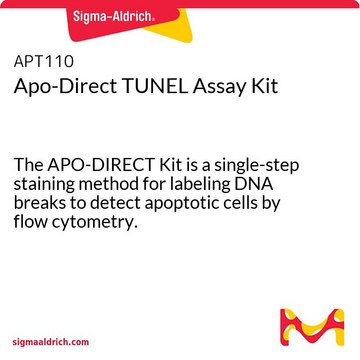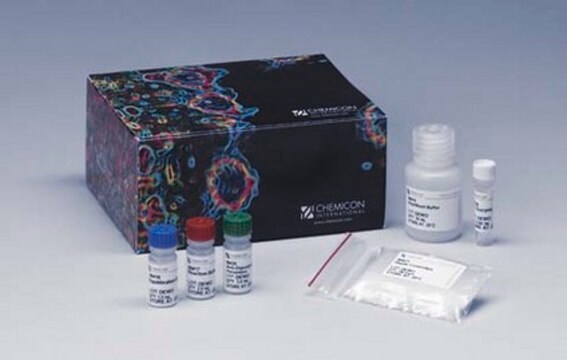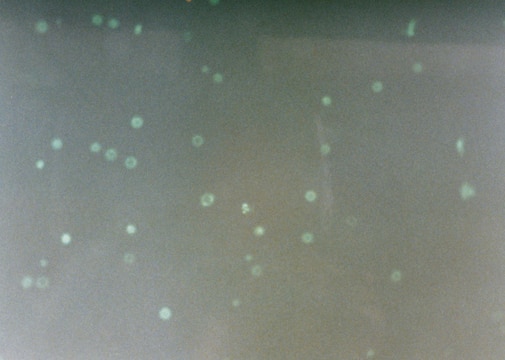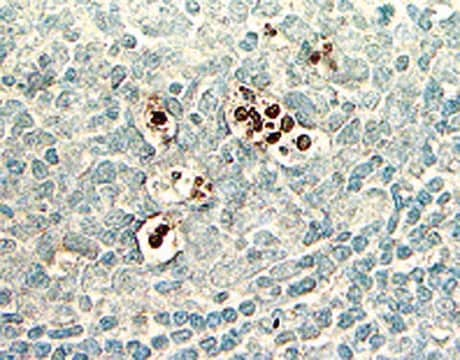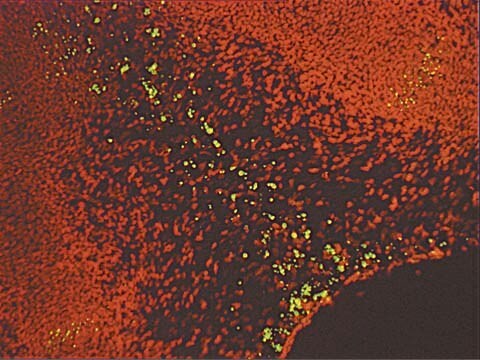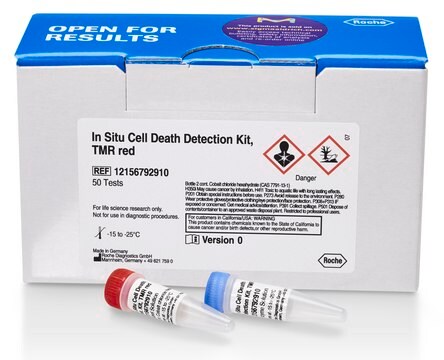QIA33
FragEL DNA Fragmentation Detection Kit, Colorimetric - TdT Enzyme
Sinonimo/i:
TUNEL Assay
About This Item
Prodotti consigliati
impiego
sufficient for 50 tests
Livello qualitativo
Reattività contro le specie (prevista in base all’omologia)
all
Produttore/marchio commerciale
Calbiochem®
Condizioni di stoccaggio
OK to freeze
tecniche
microbe id | specific enzyme detection: suitable
input
sample type paraffin section(s)
sample type frozen section(s)
sample type fixed-cell preparation(s)
Metodo di rivelazione
colorimetric
Temperatura di conservazione
−20°C
Descrizione generale
Componenti
Attenzione
Principio
Nota sulla preparazione
Stoccaggio e stabilità
Altre note
Gu, Y., et al. 1994. Endocrinology135, 1272.
Gavrieli, Y., et al. 1992. J. Cell Biol.119, 493.
Fawthrop, D. J., et al. 1991. Arch. Toxicol.65, 437.
Martin, S.J., et al. 1990. J. Immunology145, 1859.
Wyllie, A. H. 1980. Nature284, 555.
Kerr, J. F. R., et al. 1972. Br. J. Cancer26, 239.
Note legali
Avvertenze
Danger
Indicazioni di pericolo
Consigli di prudenza
Classi di pericolo
Acute Tox. 4 Inhalation - Acute Tox. 4 Oral - Aquatic Chronic 2 - Carc. 1B - Eye Dam. 1 - Muta. 2 - Ox. Liq. 3 - Skin Irrit. 2 - Skin Sens. 1 - STOT RE 2 Inhalation
Organi bersaglio
Respiratory Tract
Codice della classe di stoccaggio
5.1B - Oxidizing hazardous materials
Certificati d'analisi (COA)
Cerca il Certificati d'analisi (COA) digitando il numero di lotto/batch corrispondente. I numeri di lotto o di batch sono stampati sull'etichetta dei prodotti dopo la parola ‘Lotto’ o ‘Batch’.
Possiedi già questo prodotto?
I documenti relativi ai prodotti acquistati recentemente sono disponibili nell’Archivio dei documenti.
Il team dei nostri ricercatori vanta grande esperienza in tutte le aree della ricerca quali Life Science, scienza dei materiali, sintesi chimica, cromatografia, discipline analitiche, ecc..
Contatta l'Assistenza Tecnica.
